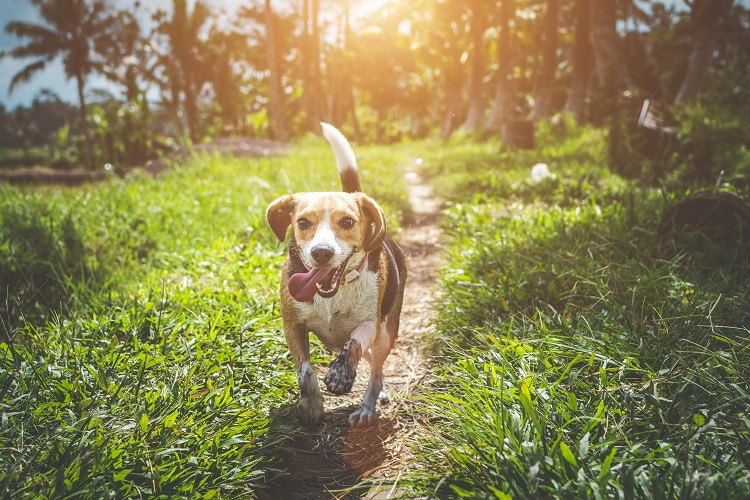Why do dogs wag their tails?

A wagging tail is often seen as a sign that a dog is happy. However, that is not always the case. Dogs use their tails to communicate many emotions, not just happiness, to both people and other dogs.
Misinterpreting the wag of a nervous, anxious, or defensive dog for a happy or excited one can sometimes lead to a dangerous situation.
Read on to find out the many reasons why a dog may wag its tail, and how to correctly interpret its wags, to help prevent you or others from facing potential harm.
Showing emotions
When a dog’s tail is in its natural or resting position, the dog is likely relaxed. The natural position of a dog’s tail varies depending on the breed. It could be curled, straight, dropped or raised.
It is when emotions are evoked that a dog will wag its tail. They could be feeling happy or excited, nervous or anxious, threatened or submissive. It is the pace or position of a dog’s tail when it is wagging that is a key indicator of its emotion.
Tail position
A dog that is alert will typically have an uplifted tail. If it is also wagging enthusiastically, they are likely happy or excited. This is commonly seen when a dog is playing or when they are pleased to see someone.
If a dog’s tail is lower than usual or tucked between its legs and only wagging slightly, this is often a sign that they are feeling scared or submissive.
A tail that is straight out is a sign of a curious dog, whereas a stiff, vertical tail can be an indicator of aggression.
Dogs often convey positive emotions and have a positive impact on other dogs, encouraging them to relax, by wagging their tail slightly to the right.
Negative emotions are conveyed by wagging their tail slightly to the left which can have a negative impact on other dogs, causing them to feel stressed.
A dog’s tail is not only used for communicative purposes, but also to aid balance, stability, movement, and swimming.
Be observant
Observing a dog’s tail and full body language can tell you a lot about how they are feeling and can help you to anticipate their behaviour.
It may seem obvious, but make sure you back away from a dog if they are growling, snarling, or displaying any other signs of aggression.
Other signs you should give a dog some space or create a more relaxed environment for a dog include hiding, moving or looking away, making themselves smaller, licking their lips, or yawning excessively.
Also observing the response of other dogs can help. For example, if a dog avoids or cowers away from another dog, it may be because the other dog is exhibiting threatening or aggressive behaviour or body language that you may not be able to recognise.
Remember that a wagging tail does not always mean a happy dog. Always ask for permission to pet a dog that is not yours.
If you need help to understand your dog’s body language or to combat bad behaviours, seek guidance from a professional such as your veterinarian, a behaviourist, or a trainer.
For expert advice and training, WitsEnd is here to help. We have a team of professionals who will help you, through training and expert advice.
Working with people from all over the country, we have had over 2000 success stories! To book an appointment or for more information, please call us on 0116 244 2455.